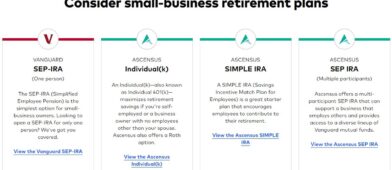After taking beating during the pandemic, recovering, and then taking a few shots in 2022 – the stock market has rallied through most of 2023.
Now that we’re at the halfway mark of the year, it’s important to look back and see what has really happened in all of 2023. The S&P 500 is up nearly 15% on the year, the Nasdaq Composite is up nearly 30%, and the Fear & Greed Index is firmly in the Greed and Extreme Greed mode.
Will things pull back? Will they keep roaring higher? It’s hard to know.
As an investor, you may be conflicted by what to do. Do you stay the course or pull back? Or do you double down?
Or, you can buy a little insurance by investing in dividend stocks. They provide a steady cash flow, but the dividend yields make the stock prices more resilient in down markets.
One of the best ways to invest in dividend stocks is through exchange-traded funds (ETFs). Many funds specialize in high dividend stocks, so you can avoid buying individual companies and build a portfolio from the ground up.
Table of Contents
- The 10 Best Dividend ETFs to Buy Right Now
- 1. iShares Emerging Markets Dividend ETF (DVYE)
- 2. WisdomTree Emerging Markets High Dividend Fund (DEM)
- 3. Invesco Zacks Multi-Asset Income ETF (CVY)
- 4. Vanguard International High Dividend Yield ETF (VYMI)
- 5. SPDR Portfolio S&P 500 High Dividend ETF (SPYD)
- 6. iShares Core High Dividend (HDV)
- 7. iShares Select Dividend ETF (DVY)
- 8. Schwab US Dividend Equity ETF (SCHD)
- 9. Vanguard High Dividend Yield Index Fund ETF (VYM)
- 10. SPDR S&P Dividend ETF (SDY)
- Why Invest in Dividend ETFs?
- Is Now the Right Time to Invest in Dividend ETFs?

💵 U.S. Bank – up to $700
Earn up to $700 when you open a new U.S. Bank Smartly® Checking account and a Standard Savings account and complete qualifying activities. Subject to certain terms and limitations. Offer valid through June 27, 2024. Member FDIC.
Offer may not be available if you live outside of the U.S. Bank footprint or are not an existing client of U.S. Bank or State Farm.
The 10 Best Dividend ETFs to Buy Right Now
Below is a list of what we believe to be the ten best dividend ETFs to buy right now. We’ve ranked the funds according to current dividend yields as an objective factor. But the dividend yield alone shouldn’t be the primary reason to buy any particular fund.
You should also consider the historical performance of each fund, which we’ve provided in increments of one year, five years, and ten years. The size of the fund is also a factor – the larger the fund, the more liquid its shares will be. A small fund with a higher dividend yield may not be easy to buy and sell – a problem in a declining market, where you may want to exit your position.
Finally, you should also consider the fund’s composition and how it will fit within your overall portfolio. For example, you may want to use a high dividend fund to get exposure to international or emerging markets. These funds pay higher dividend yields, but they represent a greater risk due to currency exchange rates.
With that information in mind, let’s take a closer look at the ten best dividend ETFs you can buy right now.

Want to work with a Vanguard Financial Advisor?
Vanguard has recently started offering the ability for you to work with a financial advisor through their Personal Advisor Services. It’s a 1-on-1 service with a fiduciary that has your interests in mind.
The initial consultation is complimentary and includes a custom plan.
🔢 All facts and figures were updated as of October 2023 with the latest information available from each fund.
1. iShares Emerging Markets Dividend ETF (DVYE)
| Dividend Yield | 9.98% | 1-Year Return | 15.80% |
| Expense Ratio | 0.49% | 5-Year Return | -2.48% |
| Price/Earnings Ratio | 4.89 | 10-Year Return | -1.27% |
| Date Launched | 2/13/2012 | Total Fund Assets | $607 million |
iShares Emerging Markets Dividend ETF (DVYE) seeks to invest in 100 dividend-paying emerging markets stocks. It tracks the Dow Jones Emerging Markets Select Dividend Index. It’s considered an equity fund, and it has the highest dividend yield on this list, at 9.98%%. The downside is that the returns of its holdings have been less attractive.
However, perhaps reflecting the recent underperformance of emerging markets, overall returns on the fund have been poor for the past ten years. But this can be an excellent play if you expect emerging markets to outperform the US market in the future, especially since you’ll be enjoying a very high dividend yield along the way.
The exact number of companies in the fund is 111, a slight decrease from earlier this year. The most significant holdings, by sector, include materials (over 20%!), energy, financial, information technology, and utilities.
2. WisdomTree Emerging Markets High Dividend Fund (DEM)
| Dividend Yield | 6.49% | 1-Year Return | 22.61% |
| Expense Ratio | 0.63% | 5-Year Return | 2.96% |
| Price/Earnings Ratio | 7.4 | 10-Year Return | 1.90% |
| Date Launched | 7/13/2007 | Total Fund Assets | $2.145 billion |
The WisdomTree Emerging Markets High Dividend Fund (DEM) is another emerging markets fund, and the one with the second-highest current dividend yield, at 6.49%. DEM is based on the WisdomTree Emerging Markets Dividend Index, which tracks the highest dividend-yielding stocks in emerging market countries.
Geographic concentrations are in Taiwan, China, Brazil, South Korea, and India. The largest industry sectors include financials, information technology, materials, energy, and utilities. You should be aware that the top 10 holdings in the fund represent nearly 30% of the portfolio’s value, making it one of the more concentrated dividend funds on this list.
3. Invesco Zacks Multi-Asset Income ETF (CVY)
| Dividend Yield | 4.85% | 1-Year Return | 18.75% |
| Expense Ratio | 0.50% | 5-Year Return | 4.27% |
| Price/Earnings Ratio | 9.50 | 10-Year Return | 4.22% |
| Date Launched | 9/21/2006 | Total Fund Assets | $93.5 million |
The Invesco Zacks Multi-Asset Income ETF (CVY) is the smallest fund on this list. But what CVY lacks in size, it makes up for with a nice dividend yield, at 4.85%. The fund tracks the Zacks Multi-Asset Income Index, which comprises US and foreign companies, real estate investment trusts, master limited partnerships, closed-end funds, and preferred stocks.
CVY currently holds stock in 151 companies, with an average market capitalization of $143.6 million. US stocks make up nearly 89% of the fund. The five largest holdings are Alliance Resource Partners, Westrock Co, Williams-Sonoma, AT&T and Morgan Stanley. Financials and energy are the top industry sectors.
4. Vanguard International High Dividend Yield ETF (VYMI)
| Dividend Yield | 4.61% | 1-Year Return | 24.54% |
| Expense Ratio | 0.22% | 5-Year Return | 4.07% |
| Price/Earnings Ratio | 8.4 | 10-Year Return | n/a |
| Date Launched | 2/25/2016 | Total Fund Assets | $6.79 billion |
The Vanguard International High Dividend Yield ETF (VYMI) is good for investors looking for a high dividend ETF from international stocks. It will allow you to diversify away from the US market. VYMI is categorized as a foreign large value fund, comprising several international stocks. The fund tracks the FTSE All-World ex-US High Dividend Yield Index.
VYMI currently holds 1,351 companies, with a median market cap of $39.3 billion. The most significant holdings in the fund include Roche Holding AG, Toyota Motor Corp., Shell plc, BHP Group Ltd, and Novartis AG. The largest holdings by country are in the United Kingdom, Japan, Canada, Australia, Switzerland, Germany, China, France, and Taiwan.
5. SPDR Portfolio S&P 500 High Dividend ETF (SPYD)
| Dividend Yield | 5.13% | 1-Year Return | 3.80% |
| Expense Ratio | 0.07% | 5-Year Return | 3.52% |
| Price/Earnings Ratio | 11.42 | 10-Year Return | n/a |
| Date Launched | 10/21/2015 | Total Fund Assets | $6.393 billion |
Sponsored by State Street Global Advisors, SPDR Portfolio S&P 500 High Dividend ETF (SPYD) is a dividend fund that attempts to correspond to the performance of the S&P 500 High Dividend Index, net of fees. It’s one of the larger dividend funds, and it has a very low expense ratio of just 0.07%.
The fund holds shares and 79 companies, with the two largest holdings in the Real Estate and Financials sector. These include Ford Motor Company, Darden Restaurants, Pinnacle West Capital, Omincom Group, NRG Energy, Southern Co and AvalonBay Communities.
6. iShares Core High Dividend (HDV)
| Dividend Yield | 4.11% | 1-Year Return | 12.76% |
| Expense Ratio | 0.08% | 5-Year Return | 5.71% |
| Price/Earnings Ratio | 13.96 | 10-Year Return | 7.95% |
| Date Launched | 3/29/2011 | Total Fund Assets | $9.95 billion |
iShares Core High Dividend (HDV) is s a popular dividend ETF with a strong track record and low fees, an expense ratio of just 0.08%. The fund is invested in 75 dividend-paying domestic stocks and is intended to serve as a core portfolio holding. That’s because they concentrate on established, high-quality companies. You’ll be familiar with many of the names they invest in.
The fund’s five largest holdings are Exxon Mobil, Johnson & Johnson, Verizon Communications, Chevron, and AbbVie. The two biggest sectors are healthcare (26.53%) and energy (24.02%) followed by financials (10.6%), information technology (9.82%) and communication (9.80%).
7. iShares Select Dividend ETF (DVY)
| Dividend Yield | 4.39% | 1-Year Return | 4.39$ |
| Expense Ratio | 0.38% | 5-Year Return | 5.33% |
| Price/Earnings Ratio | 11.21 | 10-Year Return | 8.66% |
| Date Launched | 11/03/2003 | Total Fund Assets | $17.69billion |
iShares Select Dividend ETF (DVY) focuses on 99 US stocks with a record of paying dividends for at least five years. It concentrates on broad cap US-based companies with a consistent dividend paying history. The fund also maintains a favorable sustainability profile and generally maintains low allocations in sectors like fossil fuels, weapons, and tobacco.
The five largest holdings of DVY are Altria Group, Oneok Inc, IBM, Verizon, and Prudential Financial.. The largest holdings by sector are utilities (28%), financials (22.06%), and consumer staples (10.45%).
The fund does have a higher expense ratio than other funds on this list, at 0.38%. The ratio is comprised entirely of the fund’s management fee.
8. Schwab US Dividend Equity ETF (SCHD)
| Dividend Yield | 3.73% | 1-Year Return | 10.41% |
| Expense Ratio | 0.06% | 5-Year Return | 9.61% |
| Price/Earnings Ratio | 13.87 | 10-Year Return | 11.13% |
| Date Launched | 10/20/2011 | Total Fund Assets | $47.3 billion |
Schwab US Dividend Equity ETF (SCHD) is a large value fund, tracking the Dow Jones U.S. Dividend 100 Index. The fund comprises 104 stocks with an average capitalization of $126.8 million.
The five largest holdings in the fund are Merck & Co., Broadcom, Cola, PepsiCo, Verizon, and Home Depot. Sector concentration includes industrials (17.77%), healthcare (16.26%), financials (14.08%), consumer staples (13.31%), and information technology (12.51%). It may be that the one-year performance of this fund is lower than others because of its larger concentration in the tech sector.
9. Vanguard High Dividend Yield Index Fund ETF (VYM)
| Dividend Yield | 3.37% | 1-Year Return | 12.24% |
| Expense Ratio | 0.06% | 5-Year Return | 6.83% |
| Price/Earnings Ratio | 13.8 | 10-Year Return | 9.40% |
| Date Launched | 11/06/2006 | Total Fund Assets | $58 billion |
Vanguard High Dividend Yield Index Fund ETF (VYM) tracks the performance of the FTSE High Dividend Yield Index, but it is also a value fund, officially categorized as a “large value fund.” The portfolio holds stock in 446 companies, all of which are US-based. The median market capitalization is $120.2 billion.
The largest holdings in the fund are Exxon Mobil, Johnson & Johnson, J.P. Morgan Chase, Procter & Gamble, and Broadcom. The largest sector holdings are financials (20.9%), healthcare (13.9%), consumer staples (12.4%), and industrials (10.2%).
10. SPDR S&P Dividend ETF (SDY)
| Dividend Yield | 2.79% | 1-Year Return | 5.90% |
| Expense Ratio | 0.35% | 5-Year Return | 6.21% |
| Price/Earnings Ratio | 16.11 | 10-Year Return | 9.23% |
| Date Launched | 11/08/2005 | Total Fund Assets | $9.65 billion |
The SPDR S&P Dividend ETF (SDY) tracks the SPDR S&P High Yield Dividend Aristocrats Index, designed to measure the performance of the highest dividend-yielding companies in the S&P 1500. Each company included in the index must have a policy of consistently raising dividends every year for the past 20 years or more.
The fund holds stock in 119 companies, with an average market capitalization of $62.3 million. The five largest holdings include IBM, Leggett & Platt Inc., Amcor PLC, Exxon Mobil, and National Retail Properties. The largest holdings by sector are industrials (20.00%), consumer staples (17.26%), utilities (15.15%), and financials (14.26%).
Why Invest in Dividend ETFs?
While most portfolios in recent years have focused primarily on growth, income has always been an essential part of a balanced portfolio mix. While that typically comes from bonds and other interest-bearing securities, high dividend stocks can also be a hybrid between growth assets and income-generating securities.
The stocks pay regular dividends and offer the potential for capital appreciation. Also, notice that the average P/E ratio of each fund is well below 20, which is much lower than that of growth stocks, which can often exceed 100.
The problem with investing in high-dividend stocks is knowing which companies to choose. The solution to that problem is to invest in a dividend ETF. An ETF is a fund comprised of scores or hundreds of companies and is usually based on an underlying index. That means the expense ratio on the fund will be low, and it will usually include the highest quality companies with the best prospects.
Qualified vs. Unqualified: How ETF Dividends Are Taxed
If you hold dividend ETFs in a taxable account, it’s important to be aware of how your dividends will be taxed. While you should always consult a tax professional for advice on your individual situation, here is some general information to consider.
Dividend income is taxed as qualified or unqualified. Qualified dividends are taxed at the capital gains tax rate, which is lower than the regular income tax rate at which unqualified dividends are taxed.
Ideally, your ETF portfolio will issue qualifyed dividends, but you may receive both types. For a dividend to be qualified, it must be issued by a U.S. or qualifying foreign company, meet a minimum holding period (minimum 60 days during the ex-dividend date), and be recognized by the IRS as a qualifying dividend. Remember to speak with your accountant if you’re unsure how your ETF dividends are being taxed.
Is Now the Right Time to Invest in Dividend ETFs?
Income-generating assets are always appealing, whether the market is rising higher or going lower. It’s about taking a slight defensive stance and understanding that there’s comfort in income. While dividend stocks don’t offer principal protection, they should provide stable income as long the underlying business is still strong.
Not only will that income provide you with the cash flow during a time of market turbulence, but high dividend stocks can often weather market declines better than growth stocks.
If you’ve been looking to add income and stability to your portfolio, take a close look at dividend ETFs. One or more of the funds on this list can be just what you need to help better stabilize your portfolio. For example, you may want to choose one fund that invests in US stocks with another that invests in emerging markets.




Leave a Comment: